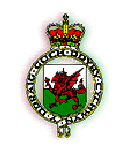The Welsh Assembly  In May 1999 the National Assembly for Wales was established and the nature of government in Wales changed. A new democratic and accountable system with greater powers of innovation and with decisions and policies focused on Wales, replaced the old system. In May 1999 the National Assembly for Wales was established and the nature of government in Wales changed. A new democratic and accountable system with greater powers of innovation and with decisions and policies focused on Wales, replaced the old system.
Membership Of The National Assembly  The National Assembly has 60 Members. The National Assembly has 60 Members. - 40 of these are elected by first-past-the-post from the same Parliamentary constituencies as Westminster MPs.
- The other 20 are elected from 5 regional lists. There are 4 Assembly Members (AMs) from each of these seats. So in any part of Wales, a voter has 5 Assembly Members, 1 directly elected from a constituency and 4 elected through the Regional List.
- The combination of the first-past-the-post elections with the additional members produces an overall proportional result for the first time in Wales. In many cases, candidates who stood in constituencies also stood on their party's regional list. This has produced the novel phenomenon of candidates being defeated in constituencies but being elected to the Assembly from the regional lists. This has contributed to the less adversarial atmosphere of the Assembly where party politicians who have been fighting each other in elections can end up working alongside each other.
- The first elections to the Assembly were held on May 6th 1999 and the votes counted the following day. The electors gave Labour 28 seats, Plaid Cymru 17, the Conservatives 9 seats and the Liberal Democrats 6 seats.
- With no overall majority for any party, Alun Michael as Leader of the Welsh Labour Party formed a minority government and became First Secretary. Rhodri Morgan succeeded him in February 2000.
- However, in October 2000 a coalition government was formed between Labour and the Liberal Democrats, and the National Assembly has now entered a period of majority government.
Structure of The Welsh Assembly The structure of the Assembly is a unique combination of a Cabinet system with a committee structure that enables wider involvement in policy development than is the rule in Westminster.  The First Minister chairs a Cabinet of nine members, seven of whom have a subject portfolio. One of these is the Finance Secretary with responsibility for the Welsh budget of £7 billion, but also holds a subject portfolio for Local Government and Communities. The other Cabinet Member is the Business Manager, or Trefnydd, who organises the business of the National Assembly and acts as a focus, along with the First Minister, for the co-ordination of coalition government. The First Minister chairs a Cabinet of nine members, seven of whom have a subject portfolio. One of these is the Finance Secretary with responsibility for the Welsh budget of £7 billion, but also holds a subject portfolio for Local Government and Communities. The other Cabinet Member is the Business Manager, or Trefnydd, who organises the business of the National Assembly and acts as a focus, along with the First Minister, for the co-ordination of coalition government. - The engine room of the Assembly is the Subject Committees. These deal with policy development in a much more open and proactive way than had been possible previously..
- Other committees that have interests across all the subject portfolios are the Regional Committees. As all the AMs in the relevant region are entitled to be members of the Regional Committee, then the parties will not be represented on the Committees in proportion to their strength in the Assembly overall and so the Regional Committees are only advisory and not decision making.
- There are also 4 regulatory committees that provide part of the checks and balances of the Assembly by the requirement that the Chair of each of these is a member of one of the Opposition parties. The 4 regulatory committees are Audit, Legislation, Standards and House affairs.
Read:  Links: Links:
The above applies to the political process in the United Kingdom and follows the laws of the UK.
- The Pupiline Team
|
|

 In May 1999 the National Assembly for Wales was established and the nature of government in Wales changed. A new democratic and accountable system with greater powers of innovation and with decisions and policies focused on Wales, replaced the old system.
In May 1999 the National Assembly for Wales was established and the nature of government in Wales changed. A new democratic and accountable system with greater powers of innovation and with decisions and policies focused on Wales, replaced the old system. The National Assembly has 60 Members.
The National Assembly has 60 Members.  The First Minister chairs a Cabinet of nine members, seven of whom have a subject portfolio. One of these is the Finance Secretary with responsibility for the Welsh budget of £7 billion, but also holds a subject portfolio for Local Government and Communities. The other Cabinet Member is the Business Manager, or Trefnydd, who organises the business of the National Assembly and acts as a focus, along with the First Minister, for the co-ordination of coalition government.
The First Minister chairs a Cabinet of nine members, seven of whom have a subject portfolio. One of these is the Finance Secretary with responsibility for the Welsh budget of £7 billion, but also holds a subject portfolio for Local Government and Communities. The other Cabinet Member is the Business Manager, or Trefnydd, who organises the business of the National Assembly and acts as a focus, along with the First Minister, for the co-ordination of coalition government.  Links:
Links: